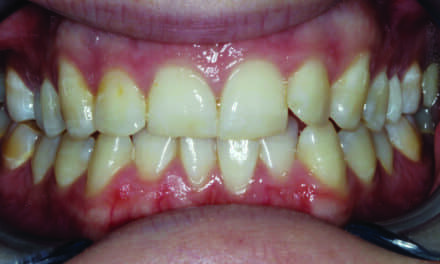 By Christopher Klein, DMD, MS, Mt Vernon and Salem, Ill
By Christopher Klein, DMD, MS, Mt Vernon and Salem, Ill
Oftentimes during anterior retraction, I find that the .019″ x .025″ posted stainless steel archwires bind and do not slide efficiently through the posterior brackets, even after reducing the posterior portion of the wire with a heatless stone. Reducing the wire once it has been fitted and cut to length is also a cumbersome task in a busy practice and leaves the wire with inconsistent dimensions and posterior irregularities.
I used Modern Arch’s tri-sectional archwires many years ago when I used twin brackets and the MBT prescription. I recently tried to incorporate this wire back into our sequence and found that it has become our wire of choice for space closure.
We use wire that is .019″ x .025″ in the maxillary anterior, but only .018″ x .018″ in the posterior. Anterior torque is maintained, sliding mechanics are smooth and predictable, doors close easily, and there is no posterior archwire reduction needed. Also, the hooks are low-profile and a lot less noticeable than the traditional brass-soldered posts.
Modern Arch also offers the same wire with additional anterior torque if needed. Likewise, tri-sectional wires can be used in the lower arch using the same or smaller dimensions. The range of wires with different combinations of anterior and posterior dimensions helps me to customize treatment to specific clinical needs.
I have found when using the tri-sectional arch, it should always be allowed to protrude a bit beyond the end of the buccal tube. This will prevent the arch from becoming stuck in the tube and halting retraction. Also, when activating a tri-sectional arch, avoid using elastomeric rings in the posterior elements to avoid hindering sliding mechanics. Elastomeric rings produce a great deal of friction. You can try lightly tying ligatures or frictionless self-ligating brackets. OP









